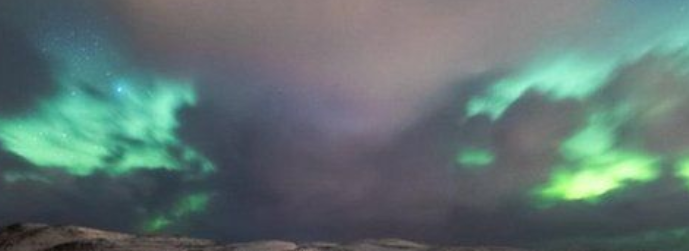
Aurora Lights

Aurora, the Northern Lights sometimes referred to as Polar lights (Aurora Borealis_seen from Brae in Shetland appears as waves of light in the magnetosphere caused by the solar wind. The disturbances are sometimes strong enough to alter the trajectories of charged atoms in the Earth’s high-altitude atmosphere collide with energetic charged particles from the sun in both solar wind and magnetospheric plasma. These particles are mainly electrons and protons, precipitate into the upper atmosphere known as Thermosphere/.exosphere. The resulting ionisation and excitation of atmospheric constituents emit light of varying colour and complexity. The form of the Aurora occurring within bands around both polar regions, is also dependent on the amount of acceleration imparted to the precipitating particles like proton which generally produce optical emissions as incident hydrogen atoms after gaining electrons from the atmosphere.
Aurora is derived from the name of the Roman Goddess of the daw who travelled from East to West announcing the coming of the Sun. Ancient Greek poets used the name metaphorically to refer to dawn, often mentioning its play of colours across the otherwise dark sky like rosy-fingered Dawn.
An Aurora was described by the Greek explorer Pytheas in the 4th century BC, Seneca wrote about Auroras in the first book of his Naturales Quaestiones classifying pithael ( Barrel-like, Chamata ( Chasm), Pogoniae ( bearded) cyparissae ( like cypress trees
